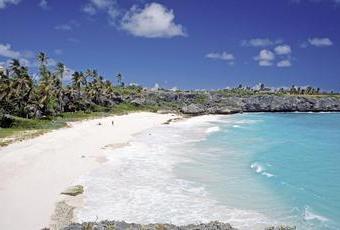 CANCUN – Rising sea levels caused by climate change are set to cause billions of dollars of damage to the island states of the Caribbean by the middle of the century, including wiping out more than 300 premium tourist resorts, according to a remarkable new report.
CANCUN – Rising sea levels caused by climate change are set to cause billions of dollars of damage to the island states of the Caribbean by the middle of the century, including wiping out more than 300 premium tourist resorts, according to a remarkable new report.
Airports, power plants, roads and agricultural land in low-lying areas, as well as prime tourist locations on islands from Bermuda to Barbados, and from St Kitts and Nevis to St Vincent and the Grenadines, will all be lost or severely damaged, with dire implications for national economies and for the welfare of hundreds of thousands, perhaps millions, of people, the report says.
Released this week at the United Nations climate conference in Cancun, Mexico, the report paints an astonishing picture of West Indies-wide devastation caused in the decades to come by the mounting sea levels associated with global warming.
The report suggests that, just for the 15 mainly English-speaking Caribbean nations which make up the Caricom (Caribbean Community) regional grouping, the cost of the damage and necessary rebuilding caused by sea-level rise could by 2080 have reached a staggering US$187 billion ($252 billion).
It suggests that, with a sea-level rise of one metre, which is now regarded as highly likely by the end of the century, the Caribbean would see “at least 149 multimillion-dollar tourism resorts damaged or lost” and would also see loss or damage of 21 of the Caricom airports, and the inundation of land surrounding 35 of the region’s 44 ports.
With a 2m sea-level rise, by no means impossible, there would be “at least 233 multimillion-dollar tourism resorts lost” plus damage or loss of nine power plants, 31 airports, and the loss of 710km of roads.
But a more sophisticated analysis on the impacts of erosion caused by rising seas, found that the damage leapt upwards, as 1m of sea-level rise on low-lying coasts gives between 50 and 100m of erosion.
A 1m rise with erosion factored in would result in “at least 307 multimillion-dollar tourism resorts damaged or lost,” the report says.
Commissioned by the United Nations Development Programme, the UK’s Department for International Development and the Organisation of Eastern Caribbean States, the report has been produced by Caribsave, a partnership between the Caribbean Community Climate Change Centre and the University of Oxford.
It is thought to be the most detailed study ever made of the potential impacts across a whole region from rising seas, and is unusual in that it has been carried out not only by scientists but also by insurance experts, who have calculated the huge potential costs of the likely damage.
The findings cause alarm, and have helped to prompt a demand at the Cancun conference from the Association of Small Island States (Aosis) nations for a giant new insurance scheme, funded by developed countries, which would pay compensation for catastrophic loss to small states caused by sea-level rise and extreme climate-related events.
Leaders of the grouping spoke eloquently of the threat to them yesterday. “We are the most vulnerable countries in the world, although we pollute the least,” said Antonio Lima, Ambassador from the Cape Verde Islands to the UN.
RISK TO ISLANDS
The Bahamas
With a combination of sea-level rise and storm surge, 22 per cent of the population is at risk of flooding. Annual costs to the Bahamas GDP will predominantly be tourism losses of between US$869 million and US$946 million in 2050 and US$2.2 billion and US$2.6 billion in 2080.
Barbados
The impacts on Barbados are dominated by losses to tourism both through rebuilding costs and loss of amenities. Losses are projected to amount to between US$283 million and US$368 million in 2050.
Antigua and Barbuda
Two per cent of land lost with 1m sea-level rise, 5 per cent with 2m; 12 per cent of population, and all airports, at risk from flooding, which threatens 50 per cent of resorts.


